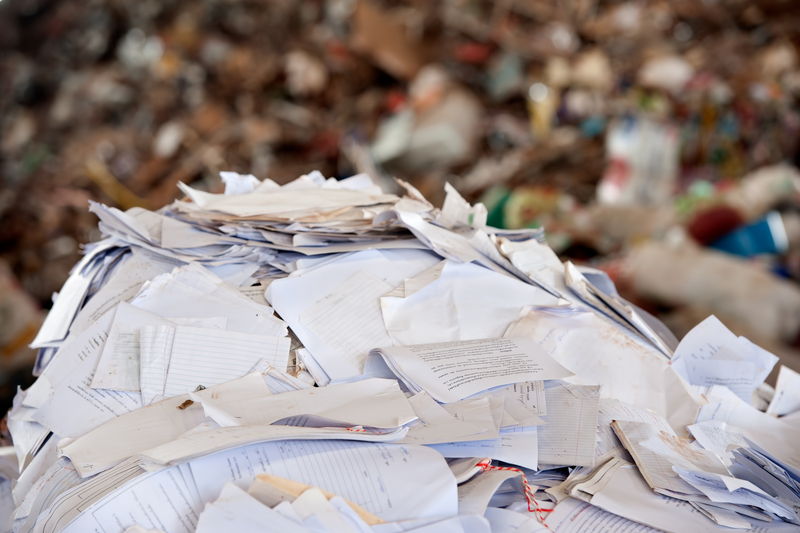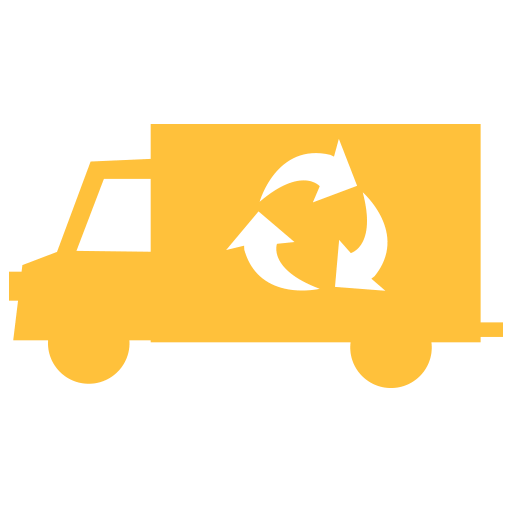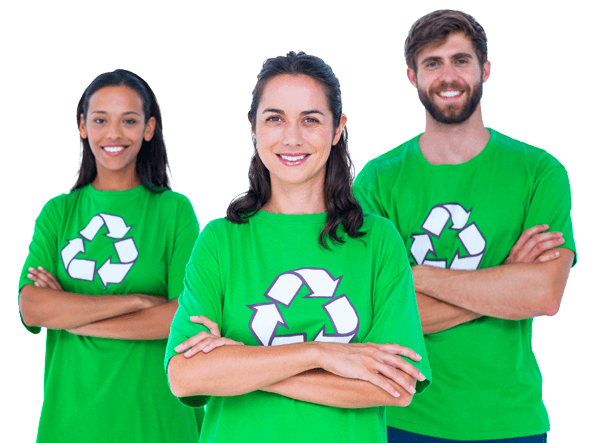Creative Packaging Disposal to Protect the Environment
Posted on 19/08/2025
Creative Packaging Disposal to Protect the Environment
Have you ever wondered what happens to the packaging once you are done with it? With rising environmental concerns due to landfills overflowing with waste, finding innovative and eco-friendly ways to dispose of packaging materials has become more important than ever. In this comprehensive article, we'll explore creative packaging disposal solutions to protect the environment, reduce landfill waste, and foster a greener future.

Why Creative Packaging Disposal Matters
Traditional packaging disposal methods, such as tossing everything into a bin and sending it to a landfill, lead to numerous environmental issues. These problems include:
- Soil and water contamination from chemicals in packaging materials
- Excessive use of landfill space
- Energy consumption and greenhouse gas emissions from waste management processes
- Harmful impact on wildlife and ecosystems
Because of these challenges, creative methods for packaging waste disposal are essential to our planet's health. Not only do they minimize environmental impact, but they also encourage sustainable practices and inspire individuals and businesses to think outside the box.
Understanding the Environmental Impact of Traditional Packaging
Most everyday packaging is manufactured from plastic, paper, metals, or a combination of these materials. Plastic, in particular, is notorious for its longevity in landfills--sometimes taking hundreds of years to decompose. Meanwhile, materials like Styrofoam (expanded polystyrene) are not biodegradable and present even greater disposal challenges.
The production and disposal of conventional packaging materials:
- Consumes precious natural resources such as petroleum, trees, and water
- Produces significant amounts of CO2
- Often leads to litter that pollutes communities and natural areas
This is why innovative and eco-friendly packaging disposal solutions are a necessity, not an option.
Eco-Friendly Packaging: The First Step in Responsible Disposal
Before diving into creative packaging disposal techniques, it's essential to recognize the growing trend towards eco-friendly packaging. These solutions make disposal easier and less harmful. Some common examples include:
- Biodegradable packaging materials - breakdown naturally by microorganisms, reducing landfill impact
- Compostable packaging - turns into nutrient-rich compost that enriches soil
- Recyclable packaging - designed specifically to be processed into new products
- Edible packaging - made from plant-based materials that you can eat!
By choosing sustainable packaging, individuals and companies set the stage for more creative--and sustainable--disposal methods.
Creative Packaging Disposal Ideas to Protect the Environment
1. Compostable Packaging: Compost It at Home
If your packaging is labeled as compostable, you can dispose of it in your home compost bin. Here's how to do it creatively:
- Shred larger compostable packages to accelerate breakdown
- Mix packaging with food waste and yard clippings for nutrient balance
- Use finished compost in your garden to help grow new plants
This closed-loop disposal method prevents packaging from reaching landfills and helps regenerate the ecosystem right in your backyard.
2. Upcycling: Transform Packaging into New Products
Upcycling is the art of turning waste into something valuable or beautiful. Instead of throwing away packaging, here are some creative ways to reuse it:
- Cardboard boxes to storage organizers or arts and crafts activities
- Glass jars and bottles as vases, candle holders, or food storage
- Plastic containers as planters or bird feeders
- Paper packaging as gift wrap, papier-mache, or scrapbooking supplies
By upcycling, you contribute to the circular economy--keeping materials in use for as long as possible and reducing waste.
3. Creative Recycling: Go Beyond the Blue Bin
Many people know about curbside recycling for bottles, cans, and paper. But it's possible to get even more creative with recycling:
- Start or join a community recycling initiative for hard-to-recycle items (like flexible plastics or electronics packaging)
- Participate in brand-sponsored recycling programs (e.g., Terracycle) for items not accepted curbside
- Support local artists or schools by donating clean packaging materials for art projects
Creative recycling helps extract the maximum value from packaging waste and diverts more materials from landfills.
4. Refill and Reuse: Choose Packaging with a Life After Purchase
Some packaging is designed with reuse in mind:
- Buy products in reusable glass jars, metal tins, or sturdy boxes and use them for storage
- Shop at stores that offer refill stations--bring your own containers and avoid single-use packaging altogether
- Create a zero-waste kit with old packaging for meals or shopping on-the-go
Making the most out of packaging before disposal reduces the frequency and impact of waste generation.
5. Packaging Return Programs
Some companies and stores offer return-to-store or mail-back packaging programs. Examples include:
- Return shipping boxes and packing peanuts for reuse
- Mailing back product packaging to manufacturers for proper recycling
- Participating in brand loyalty programs that reward responsible disposal
These initiatives take the burden off consumers and encourage brands to close the packaging loop.
Tips for a Greener Packaging Disposal Routine
You don't have to be an environmental expert to make a big difference! Here are some easy, yet innovative packaging disposal tips:
- Sort your packaging waste into recyclables, compostables, and landfill items
- Read packaging labels to understand how materials should be disposed of
- Support brands that use sustainable packaging options
- Use creative storage solutions for reusable packaging in your home
- Educate friends and family about eco-friendly packaging disposal
Packaging Innovations That Make Disposal Easier
Edible Packaging
Edible packaging is made from materials like seaweed, rice, and potato starch.
- Zero waste--just eat the packaging!
- Popular in food and beverage delivery services
- Reduces dependence on plastics
Dissolvable and Water-Soluble Packaging
Examples include laundry pods and packaging films that dissolve in water. Benefits include:
- Convenience--no need to sort for disposal
- Zero residue or microplastics
- Ideal for single-serve products
Seed-Embedded Packaging
Some companies offer boxes or wraps embedded with seeds. When planted, the packaging breaks down and grows into flowers or herbs--a perfect example of nature-inspired packaging disposal.
Creative Community and Business Initiatives
Both community groups and businesses can play a vital role in sustainable packaging disposal. Some creative programs include:
- Neighborhood collection drives for hard-to-recycle packaging
- Local businesses adopting take-back programs for their product packaging
- Eco-workshops on upcycling and composting for residents
The Role of Technology in Packaging Disposal
Modern tech innovations make eco-friendly packaging disposal more efficient and accessible:
- Smart bins that sort recycling and trash automatically
- Mobile apps that guide users on how to dispose of packaging locally
- Blockchain solutions that track packaging throughout its lifecycle
Overcoming Obstacles to Eco-Friendly Packaging Disposal
Despite advances, challenges still exist:
- Limited facilities for composting and specialty recycling in some areas
- Lack of consumer awareness or confusion over recycling rules
- Higher costs for sustainable packaging and disposal programs
However, by supporting creative packaging disposal innovations, advocating for better waste infrastructure, and spreading awareness, everyone can be part of the solution.

Frequently Asked Questions about Creative Packaging Disposal
How can I tell if packaging is compostable or recyclable?
Look for certifications and labels such as the Mobius Loop for recycling, the OK Compost label, or similar eco-certifications. When in doubt, check the company's website or local waste management guidelines.
Is it better to compost or recycle packaging?
Both composting and recycling are better than sending packaging to the landfill. Composting is ideal for organic materials that enrich soil, while recycling works for materials that can be transformed into new products. The choice depends on the type of packaging material you have.
What should I do with packaging that isn't recyclable or compostable?
Consider ways to upcycle it, or check if local community programs accept that type of waste. If not, dispose of it responsibly to prevent litter and environmental harm.
Conclusion: Embrace Creative Packaging Disposal for a Greener Tomorrow
Creative packaging disposal is not just a trend--it's a necessity for the well-being of our environment. By considering composting, upcycling, specialized recycling, reuse, and supporting packaging innovations, anyone can contribute to reducing waste and protecting our planet. The small, sustainable steps you take today can spark a wave of positive change for future generations. Let's get creative and make eco-friendly packaging disposal the new normal!
- Choose wisely: Opt for products with sustainable packaging.
- Get involved: Support community recycling and upcycling initiatives.
- Stay informed: Keep learning and spreading the word about creative ways to dispose of packaging waste.
Together, we can make a difference--one package at a time.

 020 3409 1874
020 3409 1874 020 3409 1874
020 3409 1874




 House clearance
House clearance Rubbish collection
Rubbish collection





